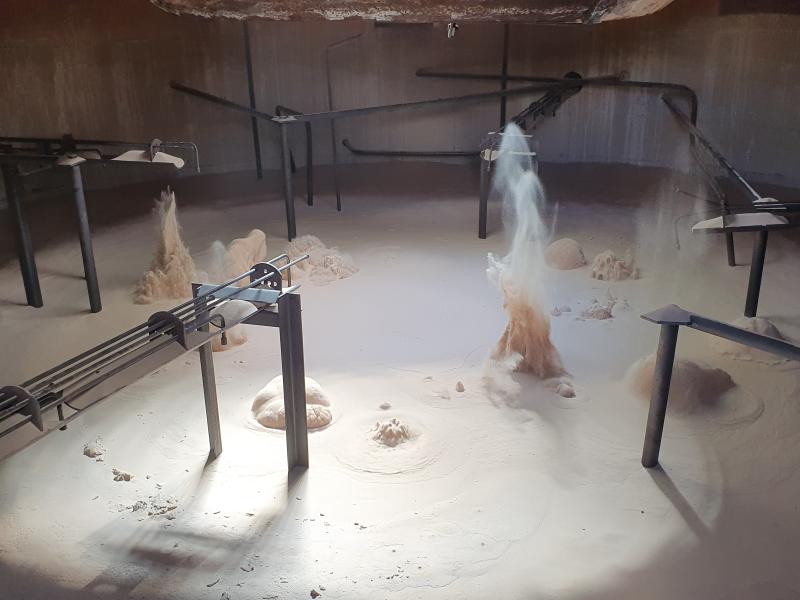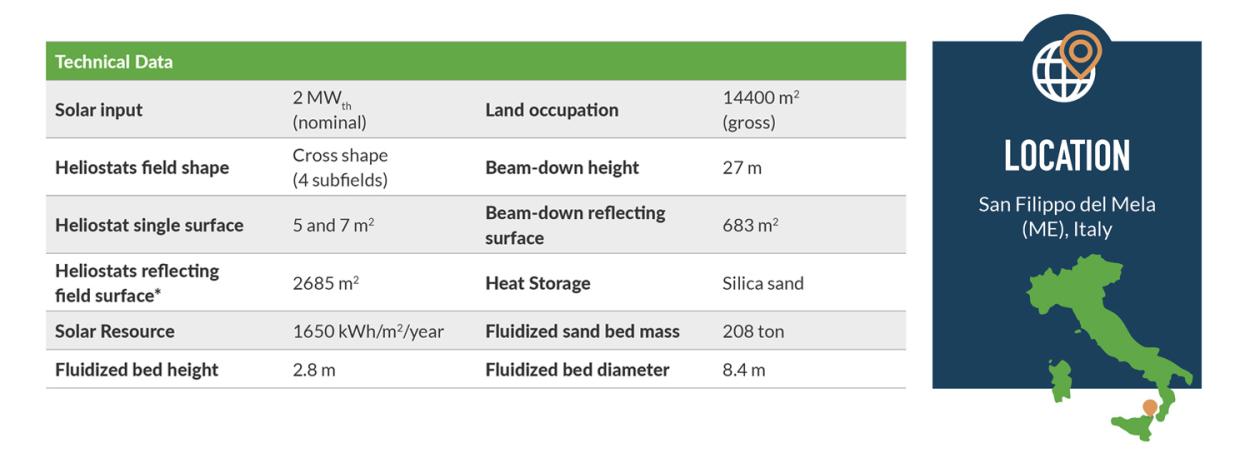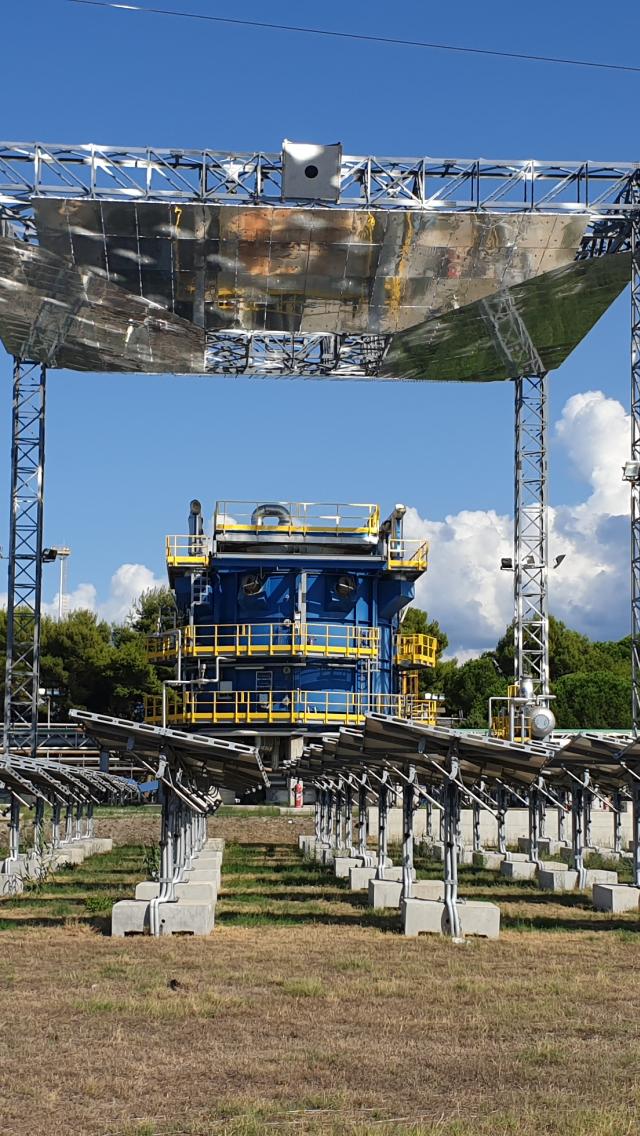In June 2016, Magaldi and A2A inaugurated the world’s first industrial-scale STEM® (Solar Thermo-Electric Magaldi) plant at the Integrated Energy Hub in San Filippo del Mela, Sicily.
This pioneering installation marked a milestone in the field of concentrated solar thermal power, introducing an innovative concept: the use of fluidized sand both as a thermal storage medium and as a direct heat exchanger for steam generation.
The demonstration module, covering an area of about 2.25 hectares, consists of 786 heliostats focusing sunlight onto a central receiver, where the sand bed absorbs solar energy. With a capacity of 2 MWth, the plant produces approximately 20 tons of steam per day, which can be used to power turbines or supply industrial processes.
Unlike conventional CSP plants, the STEM® system eliminates the need for molten salts or synthetic oils, relying instead on environmentally friendly, fully recyclable materials such as steel, glass, and silica sand.

A key advantage of this approach lies in the integrated storage capability: the sand retains heat during peak solar radiation and releases it when sunlight is unavailable, ensuring a continuous and flexible supply of steam even during cloudy periods or after sunset.
Over the course of more than 12,000 operating hours, the San Filippo del Mela plant has validated the system’s performance, reliability, and durability under real-world conditions.

From a strategic perspective, the project has played an important role in A2A’s broader plan to transform San Filippo del Mela into a sustainable energy hub, combining solar power with other renewable sources such as biogas, photovoltaics, and waste-to-energy solutions. The modularity of the STEM® system further enhances its potential: multiple units can be deployed in series or parallel, enabling scalable capacity increases tailored to local demand.
The experience at San Filippo del Mela has demonstrated not only the technical feasibility of sand-based CSP technology, but also its potential to bridge the gap between intermittent renewable generation and stable, dispatchable energy supply. It has also provided valuable insights into system integration, maintenance of heliostat fields, and optimization of thermal storage cycles.




